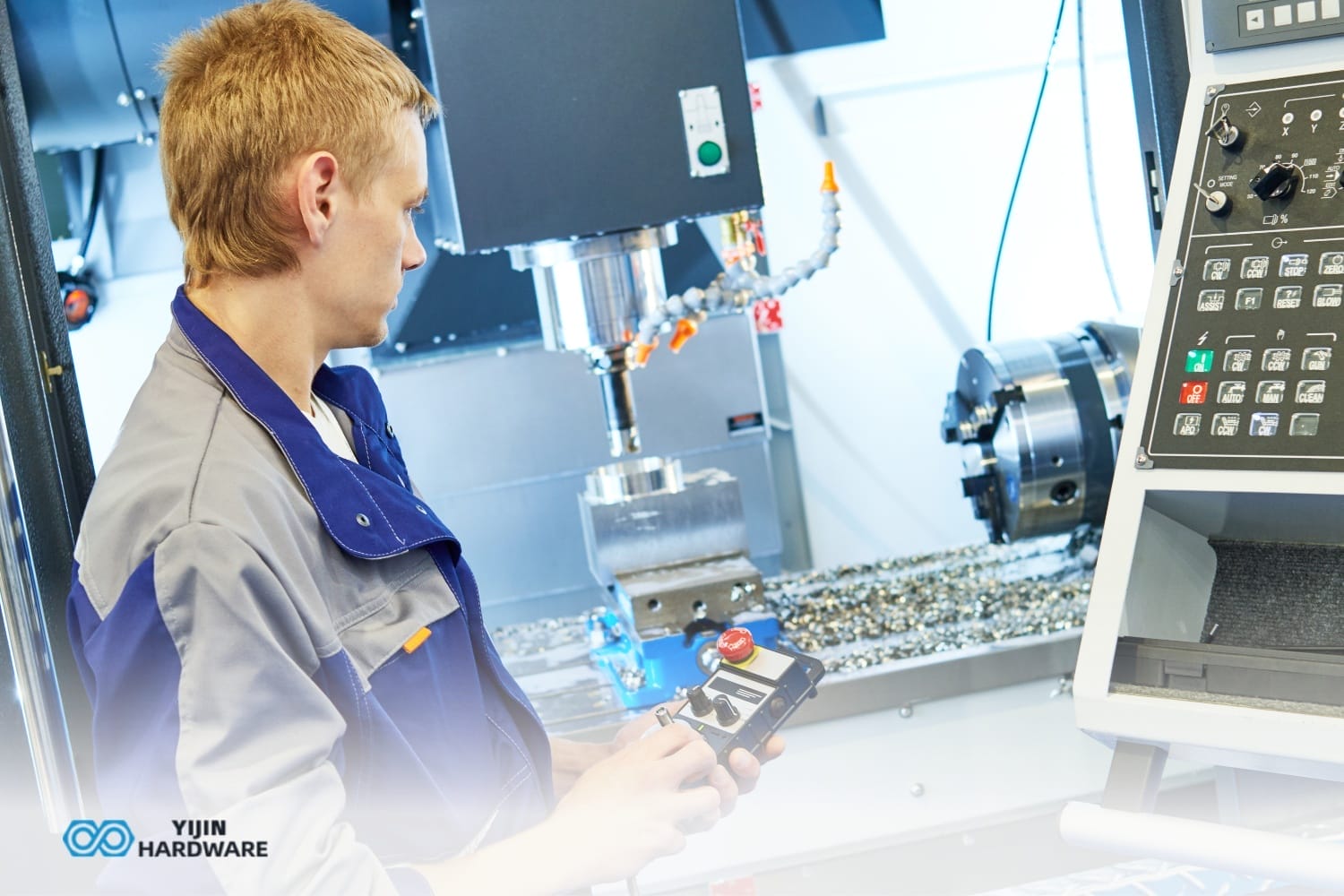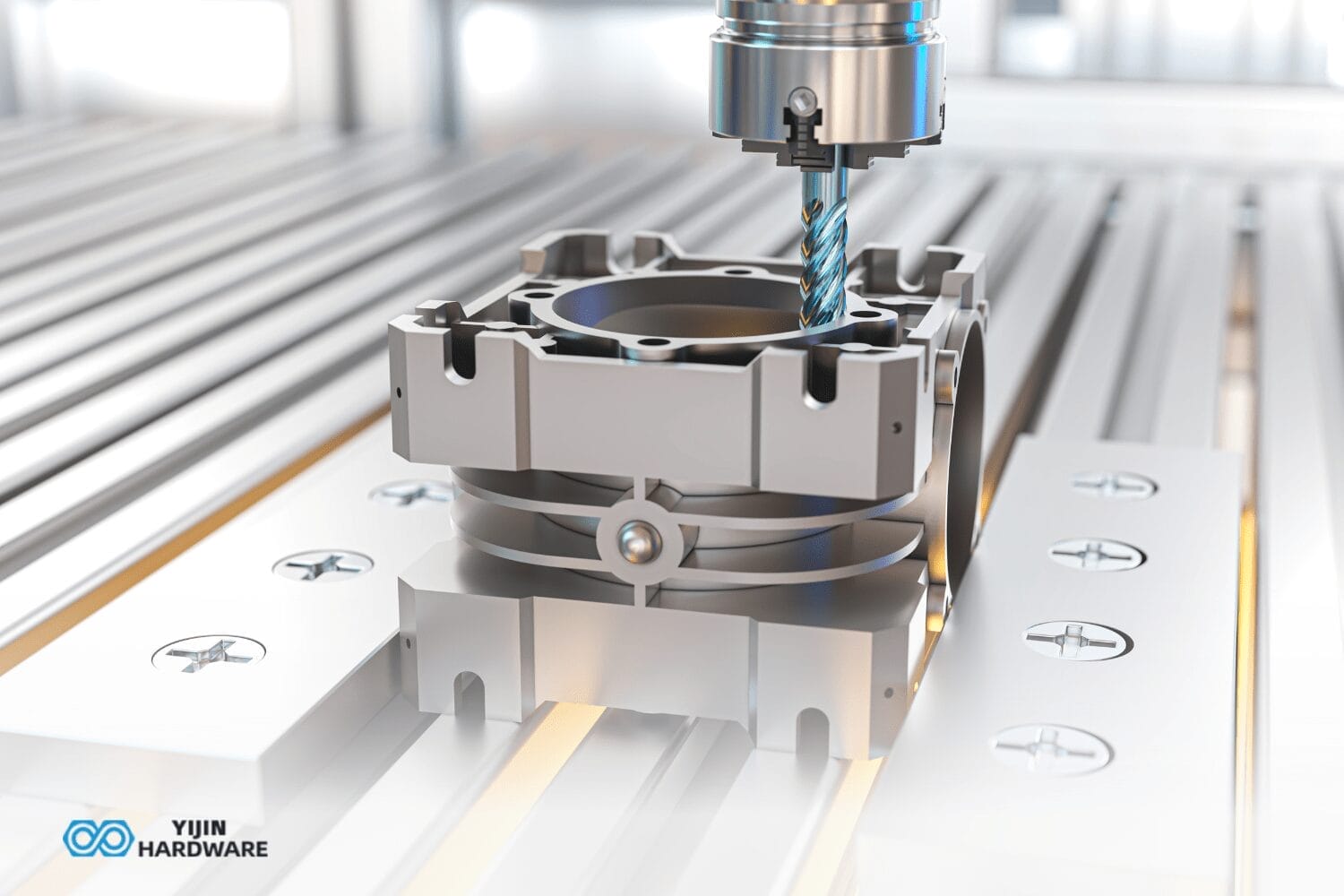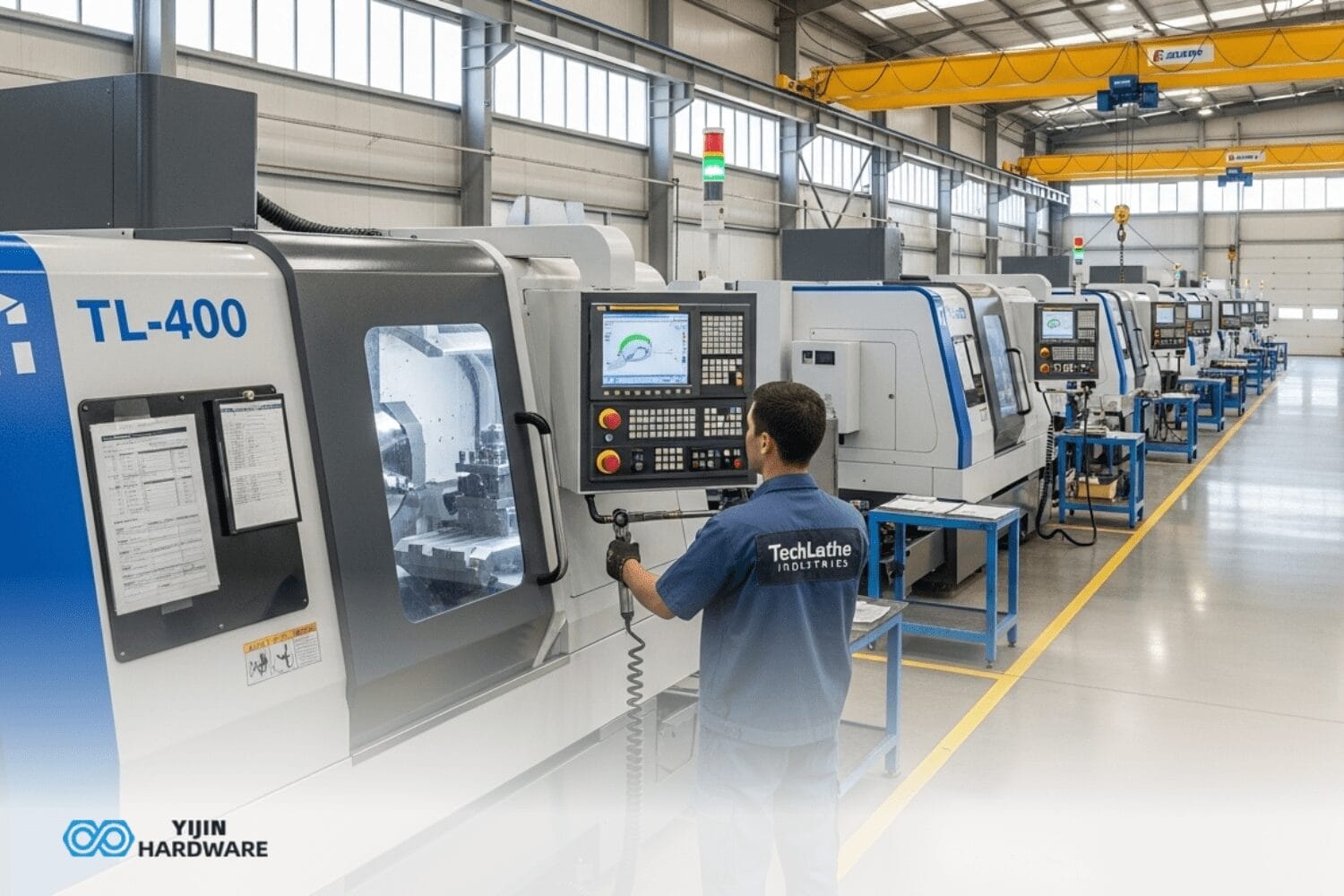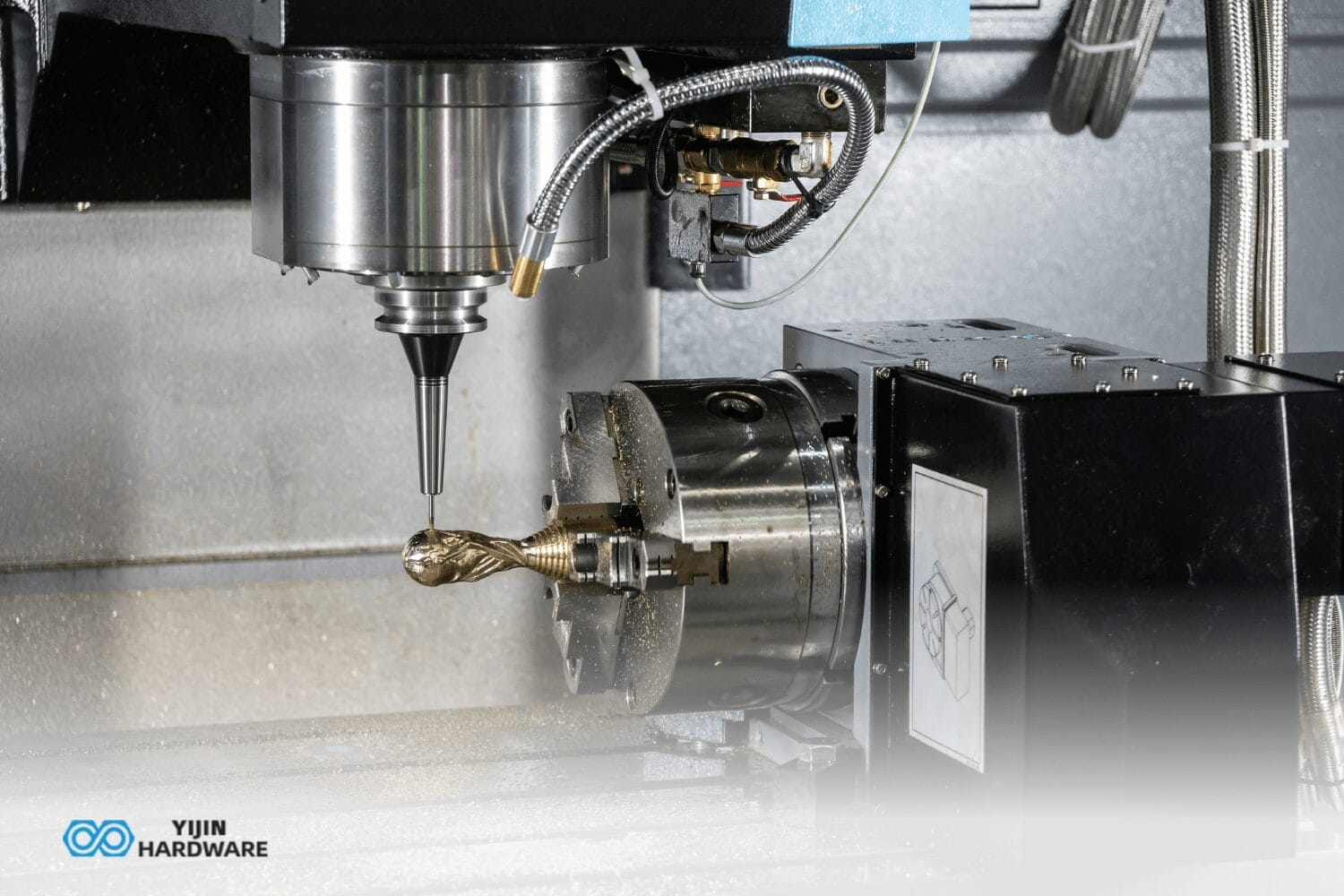What is CNC Programming?
CNC programming involves creating a detailed set of instructions for a CNC machine to follow in order to manufacture a specific part or product. These instructions tell the machine exactly what to do – how to move, when to move, and what path to follow.
What are the Types of CNC Programming?
There are primarily two types of CNC programming: a) Manual programming: Writing the code by hand b) Computer-aided manufacturing (CAM): Using software to generate the code.
There are also several other methods that offer unique advantages depending on the complexity and requirements of the task. These additional methods include macro programming, canned cycles, graphical programming, and more. Let’s explore these methods in detail:
| Method | Description | Example |
|---|---|---|
| Manual G-code Programming | Traditional method where G-code and M-code instructions are written line by line. Offers maximum control and flexibility for complex parts. | G90 G54 G00 X0 Y0 Z50 G01 Z-5 F100 X100 Y100 G00 Z50 M30 |
| CAM (Computer-Aided Manufacturing) | Software-generated CNC programs from 3D models or 2D drawings. Integrates with CAD for seamless design-to-manufacturing workflow. | Software examples: Mastercam, Fusion 360, SolidCAM |
| Macro Programming | Uses variables and logic for flexible, reusable code. Reduces program length for repetitive tasks. | #1=10 (X dimension) #2=20 (Y dimension) G90 G00 X0 Y0 G01 X#1 F100 Y#2 M99 |
| Canned Cycles | Pre-programmed routines for operations like drilling. Simplifies programming by using a single command for complex actions. | G81 X10 Y10 Z-10 R3 F100 (Drilling cycle) |
| Graphical Programming | Uses a graphical interface to define geometry and toolpaths. Easier for those with limited G-code experience. Available on some controllers as an alternative option. | N/A |
| Offline Programming | Programs are created away from the machine using software, allowing simulation without machine downtime. Combines CAD/CAM and manual techniques. | N/A |
| Teach Programming | Involves manually moving the machine to record positions, commonly used in robotics but also applicable in some CNC setups. | N/A |
| APT (Automatically Programmed Tool) | An older high-level language used in aerospace and advanced manufacturing. | PARTNO / EXAMPLE GOTO / 10, 20, -5 GODLTA / 5, 5, 0 FINI |
| Custom Programming Languages | Proprietary languages developed by manufacturers, like Heidenhain’s conversational programming or Mazak’s Mazatrol. | N/A |
| G-code Generation from Spreadsheets | Parametric G-code generation using software like Excel. Useful for repetitive operations or creating similar parts. | N/A |
What Are the Different Code Types Used in CNC Programming?
The common code types in CNC programming are D-codes, F-codes, G-codes, M-codes, N-codes, S-codes, and T-codes. D-codes handle tool compensation, F-codes control feed rate, and G-codes manage machine movements. M-codes oversee auxiliary functions like spindle and coolant, N-codes number program lines, S-codes set spindle speed, and T-codes manage tool selection and changes.
| Code Type | Description | Example |
|---|---|---|
| D-codes (Tool Diameter/Radius Compensation Codes) | Used for tool diameter or radius compensation, mainly in CNC milling. Ensures accurate dimensions by compensating for tool size. | D01 (Select tool offset 1) G41 D01 (Activate left-hand cutter compensation using offset 1) |
| F-codes (Feed Rate Codes) | specify the speed at which the cutting tool moves through the material. | F100 (Set feed rate to 100 units per minute) |
| G-codes (Preparatory Codes) | Controls machine operations such as rapid moves, controlled feeds, and canned cycles. | G00 (Rapid positioning) G01 (Linear interpolation) G02 (Circular interpolation CW) G03 (Circular interpolation CCW) |
| M-codes (Miscellaneous Codes) | Controls auxiliary machine functions like spindle control, tool changes, coolant, and program flow. | M03 (Spindle on clockwise) M05 (Spindle stop) M06 (Tool change) M30 (Program end and rewind) |
| N-codes (Sequence Numbers) | Numbers lines of code to organize the program and allow easy reference to specific parts. Often optional in modern CNC programs. | N10 G00 X0 Y0 Z50 N20 G01 X100 F200 |
| S-codes (Spindle Speed Codes) | Sets the spindle speed in RPM, determining how fast the spindle rotates, which is important for proper cutting speeds. | S1000 (Set spindle speed to 1000 RPM) |
| T-codes (Tool Selection Codes) | Selects a specific tool from the machine’s tool magazine or turret and prepares for a tool change. | T01 M06 (Select tool 1 and change to it) |
There are a few other code types that are sometimes used in CNC programming, though they’re less common or machine-specific. These include:
| Code Type | Description | Example |
|---|---|---|
| P-codes | Often used for dwell time in canned cycles or as parameters in some custom cycles. Can also represent other values depending on the specific G-code being used. | G04 P1000 (Dwell for 1 second) <br> G10 L2 P1 X0 Y0 Z0 (Set work offset for G54) |
| Q-codes | Used in some canned cycles, often to specify a cutting depth or an incremental depth per pass. The exact meaning can vary depending on the cycle. | G73 X10 Y10 Z-10 R3 Q2 F100 (Peck drilling cycle with 2mm peck depth) |
| R-codes | Can be used for arc radius in circular interpolation or as a parameter in canned cycles. Often represents a retract plane or reference point. | G02 X50 Y0 R25 F200 (Circular interpolation with 25mm radius) <br> G81 X10 Y10 Z-10 R3 F100 (Drilling cycle with R3 as retract plane) |
| I, J, K codes | Used to specify arc center points in circular interpolation. I is for X-axis, J for Y-axis, and K for Z-axis. | G02 X50 Y50 I25 J0 F200 (Circular interpolation with center point) |
| L-codes | Sometimes used for loop counters in canned cycles or to specify the number of repetitions for a operation. | G73 X10 Y10 Z-10 R3 Q2 F100 L5 (Peck drilling cycle repeated 5 times) |
Note that the exact usage and meaning of these codes can vary depending on the specific CNC control system and the context in which they are used. Always refer to your machine’s programming manual for the most accurate information.
How to get Started with CNC Programming? Tips for Starters
To start with CNC programming, first, understand the basics of CNC machines, their components, and the coordinate system. Learn essential G-codes and M-codes, practice reading technical drawings, and improve your mathematical skills, especially in geometry and trigonometry. Gain hands-on experience with a CNC machine or simulation software like Fusion 360 or CNC Simulator Pro. Familiarize yourself with CAD/CAM software, starting with beginner-friendly tools. Take courses, join CNC communities, and practice regularly by starting with simple projects. Learn about tool selection, machine maintenance, and stay updated with industry trends. Progress gradually and embrace mistakes as part of the learning process.
Here’s a simple G-code program to get you started:
O1000 (Simple square program)
N10 G90 G54 G00 X0 Y0 Z50 (Absolute positioning, work offset, rapid move to start)
N20 T01 M06 (Tool change to tool 1)
N30 S1000 M03 (Set spindle speed and start spindle clockwise)
N40 G00 X0 Y0 (Rapid move to X0 Y0)
N50 G01 Z-5 F100 (Linear move to Z-5 at feed rate 100)
N60 X100 (Move to X100)
N70 Y100 (Move to Y100)
N80 X0 (Move to X0)
N90 Y0 (Move to Y0)
N100 G00 Z50 (Rapid move to Z50)
N110 M30 (End program)
This program will cut a simple square. As you progress, you can modify and expand on this basic structure to create more complex shapes and operations.
Useful CNC Programming Softwares for CNC Programmers
When choosing CNC software, consider your skill level, the type of machine you’re using, your budget, and compatibility with your operating system. It’s also important to match the software to your project’s specific needs. Beginners might start with user-friendly options like Fusion 360, which combines CAD and CAM, and later move to more specialized tools as they advance.
Let’s break this down into categories to give you a comprehensive overview of the tools available:
- CAD (Computer-Aided Design) Software:
- Autodesk Fusion 360 (popular for beginners and professionals)
- SolidWorks
- AutoCAD
- Inventor
- FreeCAD (open-source)
- OnShape (cloud-based)
- Rhino 3D
- CAM (Computer-Aided Manufacturing) Software:
- Mastercam
- Fusion 360 (includes CAM functionality)
- SolidCAM
- HSMWorks
- Vectric Aspire
- CamBam
- FeatureCAM
- Integrated CAD/CAM Software:
- Fusion 360
- NX CAM
- CATIA
- Creo
- G-code Editors and Viewers:
- Notepad++ (with G-code syntax highlighting plugin)
- CNC Syntax Editor
- NCViewer.com (online G-code viewer)
- G-Code Viewer and Analyzer
- CNC Simulators:
- CNC Simulator Pro
- Vericut
- SolidCAM’s iMachining
- CIMCO Edit (includes simulation)
- Tool Path Optimization Software:
- MachineWorks
- ModuleWorks
- SprutCAM
- CNC Machine Control Software:
- Mach3/Mach4
- LinuxCNC (open-source)
- UCCNC
- Specialized CNC Software:
- BobCAD-CAM (for milling, turning, wire EDM)
- DP Technology ESPRIT (for multi-axis machining)
- hyperMILL (for 5-axis machining)
- Measurement and Inspection Software:
- PC-DMIS
- Calypso
- PolyWorks
- Project Management and Documentation:
- Trello (for project management)
- Evernote or OneNote (for documentation)
- GitHub (for version control of your CNC programs)
- Learning and Training Software:
- CNCSimulator.com (online learning platform)
- Siemens NX Student Edition
- Autodesk’s Design Academy
- Mobile Apps:
- CNC Machinist Calculator Pro
- GCode Viewer
- iMachining Calculator
Back to Top: What is CNC Programming









